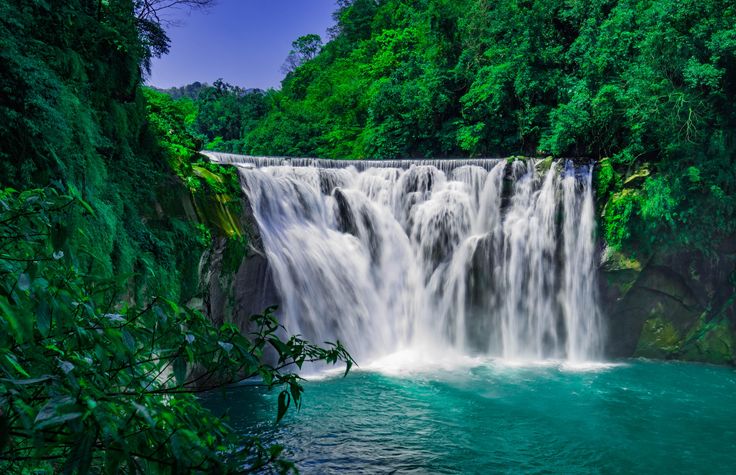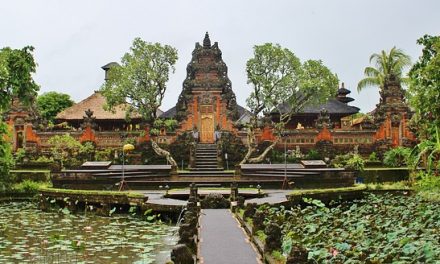Taiwan is a beautiful island nation that boasts a diverse range of attractions encompassing nature, culture, history, and modernity. Tourist Attractions in Taiwan, a mesmerizing island nation in East Asia, beckons travelers with its unique blend of traditional heritage and urban innovation. Each corner of this picturesque island is dotted with stunning tourist spots, from age-old temples to modern shopping districts. Let’s dive into some must-visit attractions in Taiwan.
List of the Attractions in Taiwan
Taiwan is a diverse and beautiful destination with a wide range of attractions to explore. Here’s a list of some of the top tourist attractions in Taiwan across the island:
- Banka Lungshan Temple, Wanhua
- Dadaocheng Area
- Taroko Gorge – Shakadang River Trail
- Ximending, Wanhua District
- The Yangmingshan Sulphur Springs
- Rainbow Village
- Keelung Zhongzheng Park
- Song of the Forest
- National Chiang Kai Shek Memorial Hall
- Shifen Waterfall
- Dragon and Tigers Pagodas in Kaohsiung
1. Banka Lungshan Temple, Wanhua
Banka Lungshan Temple, a true gem nestled in the heart of Wanhua, Taipei, beckons travelers from around the world with its vibrant history and stunning architecture. Known for its deep-rooted religious traditions and intricate design, the temple offers a captivating experience for both spiritual seekers and history buffs. If you’re planning a trip, here’s a guide on the best time to visit and the top activities to enjoy at the Banka Lungshan Temple.
Best Time to Visit Banka Lungshan Temple:
1. Lantern Festival: Falling on the 15th day of the first lunar month, the Lantern Festival turns the temple grounds into an enchanting spectacle of lights. With countless lanterns illuminating the surroundings, this is the perfect time to capture some awe-inspiring photos.
2. Dragon Boat Festival: This event, which occurs in the fifth lunar month, sees the area around Wanhua bustling with activity. A visit to the temple during this period allows you to combine spiritual exploration with witnessing local customs and dragon boat races.
3. Autumn Months: Generally, the months from October to December offer pleasant weather with less rainfall. The mild temperatures make it comfortable to explore the temple grounds and indulge in prolonged meditation or prayer sessions.
What to do at Banka Lungshan Temple?
Explore the Temple Architecture: One of the hallmarks of the Banka Lungshan Temple is its magnificent architecture. Admire the intricate carvings, stunning stone and woodwork, and the incredible attention to detail in every corner. The temple is a blend of Taoist, Buddhist, and Confucian design elements, making it a unique site to explore.
Participate in a Prayer Session: The temple is not just a tourist spot; it’s an active place of worship. Join the locals during their prayer sessions, light incense, and immerse yourself in the serene ambiance.
Attend Traditional Ceremonies: Throughout the year, various ceremonies and rituals are held at the temple. These ceremonies provide a rare insight into the religious practices and traditions of Taiwan.
Delve into History: Take a guided tour or hire a local guide to dive deep into the history of the temple, learning about its establishment, renovations, and the legends that surround it.
Explore the Surroundings: Wanhua is one of Taipei’s oldest districts. After visiting the temple, stroll around to explore local markets, traditional shops, and eateries. A trip to the nearby Bopiliao Historic Block will give you a glimpse of Taipei’s history.
Meditation & Reflection: The temple, with its peaceful environment, is a great spot for personal reflection and meditation. Find a quiet corner and connect with your inner self amidst the spiritual vibes.
2. Dadaocheng Area:
A historical neighborhood, Dadaocheng whisks visitors back in time with its well-preserved buildings, traditional medicine shops, and teahouses. Don’t forget to stroll alongside the Tamsui River during sunset for a breathtaking view.
Dadaocheng is one of Taipei’s most historic and culturally rich neighborhoods. A blend of past and present, this area offers visitors a unique blend of old-world charm and modern conveniences. If you’re planning a trip to Taipei, a visit to Dadaocheng is a must. But when is the best time to go, and what can you expect to do there? Read on to find out.
Best Time to Visit Dadaocheng
While Taipei has a lot to offer year-round, the best times to visit Dadaocheng are during the spring (March to May) and autumn (September to November). During these periods, the weather is moderate, with less rain and more comfortable temperatures.
1. Spring: The blossoming of flowers, especially during the Lunar New Year celebrations, makes this a vibrant and colorful time to visit.
2. Autumn: The cool breeze and the transformation of the foliage to a myriad of colors provide the perfect backdrop for leisurely walks.
Avoid the summer months, which tend to be hot and humid, and the occasional typhoon can make outdoor activities less enjoyable.
What to do in Dadaocheng?
Dihua Street: This historic street is the heart of Dadaocheng. Walking down its cobbled pathways, you’ll find a mix of old tea houses, traditional medicine stores, and modern boutiques. It’s particularly lively during the Lunar New Year when the street market offers an array of festive goods.
Dadaocheng Wharf: An excellent spot to unwind. You can take a riverside stroll, rent a bicycle, or even take a boat ride to appreciate the beauty of the Tamsui River.
Yongle Fabric Market: A paradise for fashion enthusiasts and crafters, this market offers a vast selection of fabrics, accessories, and bespoke tailoring services.
Temples: Visit the beautifully preserved Xiahai City God Temple and the Tianma Temple to gain insights into local religious practices and admire the intricate architecture.
Tea Tasting: The area is renowned for its tea culture. Visit one of the many traditional tea houses, where you can learn about and savor different varieties of Taiwanese teas.
Attend Festivals: Time your visit with local festivals such as the Dadaocheng Fireworks Festival or the Dadaocheng Traditional Art Festival for a unique cultural experience.
Local Cuisine: Indulge in the local delicacies and street food that Dadaocheng has to offer. From braised dishes to sweet treats, there’s a wide variety to satisfy every palate.
3. Taroko Gorge: Shakadang River Trail: Tourist Attractions in Taiwan
One of Taiwan’s top natural wonders, the Taroko Gorge is renowned for its turquoise river and marble cliffs. The Shakadang River Trail provides an idyllic path for hikers, promising beautiful sceneries and peaceful surroundings. The majestic beauty of tourist attractions in Taiwan isn’t just confined to its cities. Outside the hustle and bustle lies one of nature’s breathtaking masterpieces: Taroko Gorge.
Within this awe-inspiring National Park, you’ll find the Shakadang River Trail, an accessible path that allows visitors to get up close and personal with the wonders of Taroko. If you’re planning a visit, it’s essential to know the best time to go and the activities you can indulge in. Let’s dive in!
When is the Best Time to Visit?
1. Autumn (Late October to Early December):
Autumn offers cool, comfortable weather with minimal rainfall, making it a favorite season for many. The forests are a canvas of orange and red, offering a picturesque setting for your hikes. Temperatures range from 20°C to 28°C.
2. Spring (March to May):
Spring presents Taroko in full bloom, with vibrant flowers complementing the lush greenery. The weather is mild but be prepared for occasional showers. With temperatures fluctuating between 18°C to 25°C, it’s a pleasant time for exploration.
It’s worth noting that summer can be hot and rainy, and winters, while not extremely cold, can be a bit chilly for some visitors. Also, the region can be prone to typhoons from June to October, so always check the local forecasts before planning your visit.
What to do at Shakadang River Trail and Surroundings?
The Pristine Pathway: The Shakadang River Trail is approximately 4.5 km and is known for its crystal-clear waters and enormous marble boulders. It’s a relatively easy hike, perfect for families and those looking for a peaceful nature walk. Along the way, you can encounter small caves, overhanging cliffs, and perhaps a few local species.
Local Indigenous Villages: The trail leads you to several indigenous villages. It’s an opportunity to understand local cultures, and traditions, and perhaps buy handcrafted souvenirs.
Sample Local Delicacies: Don’t miss out on the chance to taste the local cuisine. Stalls along the trail offer snacks like mochi and mountain pork sausages, providing you with a delightful mix of flavors.
Extended Hikes: For the adventurous, you can combine your Shakadang experience with other trails such as the Zhuilu Old Trail for panoramic views of the gorge.
Photography: The combination of turquoise waters, marbled pathways, and lush vegetation offers endless opportunities for both amateur and professional photographers.
Swimming: While many areas of the river are not suitable for swimming due to strong currents, there are designated spots where you can take a refreshing dip, especially welcome after a long hike.
Camping: For those looking to immerse themselves fully, consider camping at designated sites to experience the beauty of Taroko under a starry sky.
4. Ximending, Wanhua District
Ximending, located in the historic Wanhua District of Taipei, Taiwan, is a bustling urban area known for its youth culture, vibrant street arts, and shopping. Often referred to as the “Harajuku of Taipei,” Ximending has established itself as a major cultural and shopping hub in the city. If you’re planning a visit, here’s a comprehensive guide on the best time to explore Ximending and the must-do activities while you’re there.
Best Time to Visit Ximending, Wanhua District:
1. Fall (October to December):
Weather: The fall season offers mild and pleasant temperatures, which makes it a great time for exploring the streets of Ximending.
Events: You can witness several festivals and events during this time, including the Mid-Autumn Festival.
2. Spring (March to May):
Weather: Spring is another comfortable season to stroll around Ximending with temperatures being moderate and the beauty of cherry blossoms in full bloom.
Events: Various spring festivals light up the streets, giving visitors a taste of local culture and traditions.
While summer (June to September) brings crowds and occasional rain showers, and winter (January to February) can be a bit chilly, Ximending’s allure is year-round, ensuring there’s always something to explore.
What to do at Ximending:
1. Street Art & Performances:
Wander around the pedestrian streets and marvel at the colorful graffiti, murals, and live street performances. The artsy vibe is infectious, and you’ll find yourself snapping photos at every corner.
2. Shopping Extravaganza:
Dive into the world of fashion, electronics, and quirky finds in the myriad shops of Ximending. Whether you’re hunting for high-end brands or local crafts, the district has it all.
Taste the Street Food: Ximending is a food paradise. Relish local delicacies such as stinky tofu, beef noodles, and bubble tea at the numerous street food stalls.
Cinema Street (Wuchang Street Section 1): If you’re a movie enthusiast, the historic cinema street with its old theaters and indie film houses is a must-visit.
Red House Theater: Built in 1908, this iconic octagonal structure serves as an art space and a hub for LGBTQ+ culture. Don’t miss the weekend craft market held on its premises.
Historical Exploration: Dive deep into the rich history of Wanhua District by visiting heritage sites like Lungshan Temple, a beautiful piece of Taiwanese architecture and spirituality.
Tattoo Parlors: Given the youthful vibe, Ximending is also home to some of Taipei’s best tattoo artists. If you’re looking to get inked, this is the place.
Nightlife: As the sun sets, Ximending comes alive with its pulsating nightlife. From lively bars to chic nightclubs, there’s something for every night owl.
5. The Yangmingshan Sulphur Springs: Tourist Attractions in Taiwan
The enchanting region of Yangmingshan, located just north of Taipei, offers a myriad of natural wonders, and among them, the Sulphur Springs stand out prominently. These natural hot springs, enriched with minerals and surrounded by verdant landscapes, provide an ideal retreat for tourists and locals alike. If you’re contemplating a visit, here’s everything you need to know.
Best Time to Visit the Yangmingshan Sulphur Springs
Spring (February to April): This period stands out for its warm temperatures and vibrant cherry blossoms, setting a picturesque backdrop for the springs. Additionally, the moderate crowd sizes during these months make it an ideal time for a more intimate experience.
Fall (October to November): With the mercury dipping slightly, the warmth of the sulfur springs becomes even more enticing. The golden hues of autumn foliage further enhance the overall scenic beauty.
However, even during the off-peak times, the springs offer their unique charm. It’s always advisable to check the local weather forecast and perhaps even call ahead to inquire about the current conditions of the springs.
What to do at the Yangmingshan Sulphur Springs
Therapeutic Bathing: The mineral-rich water is known for its therapeutic qualities. From skin benefits to relaxing sore muscles, the springs are a balm for both body and soul.
Nature Walks: The region around the springs is adorned with trails that meander through lush landscapes, making it perfect for those looking to combine relaxation with a bit of nature exploration.
Photography: With mist-covered mountains, the stark contrast of the yellow sulfur deposits, and the serene water bodies, there are ample opportunities for capturing some truly mesmerizing shots.
Local Gastronomy: After a relaxing dip, it’s worth exploring the local eateries. Many dishes are prepared using fresh mountain produce, providing a unique culinary experience.
Spa Treatments: Several establishments around the springs offer spa treatments, massages, and holistic therapies. Combined with the natural goodness of the sulfur springs, it’s a complete rejuvenation package.
Cultural Exploration: Delve into the local history and traditions. Some areas around the springs have stalls and exhibits that provide insights into the cultural significance of these waters and their historical usage.
6. Rainbow Village:
An art lover’s paradise, this village is adorned with colorful murals and artworks created by its resident veteran, Huang Yung-fu. A vibrant testament to the power of art and community. This vibrant enclave, with its riot of colors and mesmerizing murals, stands as a testament to the artistic spirit and resilience of its creator, Mr. Huang.
Best Time to Visit Rainbow Village:
1. Spring (March to May):
Rainbow Village is especially enchanting during the spring. The pleasant weather ensures comfortable wandering around the village, while the blooming flowers and crisp air only add to the enchantment of the colorful murals. Daytime temperatures hover between 20°C to 25°C, making it perfect for outdoor exploration.
2. Autumn (September to November):
If you want to avoid the summer crowds and still enjoy a temperate climate, autumn is your best bet. The golden hues of the fall foliage contrasting with the vibrant murals offer a visual treat.
What to do at Rainbow Village?
Admire the Art: Every inch of the village, from walls to pathways, is adorned with Mr. Huang’s unique doodles and paintings. These artworks narrate tales of his life, dreams, and memories. As you walk around, you’ll feel like you’re inside a living storybook.
Meet the Legend: If you’re lucky, you might just run into the artist himself, Mr. Huang (also known as Rainbow Grandpa). Hearing stories directly from him is an experience in itself.
Photo Sessions: Given its vibrant backdrop, Rainbow Village is every photographer’s dream. Whether you’re a professional or just someone looking to spice up your social media feed, you’ll find countless spots for that perfect shot.
Souvenir Shopping: There are several small stalls where you can buy souvenirs, from hand-painted postcards to tiny replicas of the houses. These make for wonderful keepsakes or gifts.
Cultural Events: Time your visit right, and you might be able to attend one of the cultural events or workshops held in the village. These can range from traditional Taiwanese performances to art workshops.
Relax and Reflect: Amidst the bustling tourism, you’ll find quiet corners in Rainbow Village. Sit down, relax, and soak in the ambiance. The mix of art, history, and tranquility makes it a perfect spot for reflection.
7. Keelung Zhongzheng Park: Tourist Attractions in Taiwan
When it comes to exploring tourist attractions in Taiwan, the island is filled with incredible gems waiting to be discovered. One such gem is Keelung Zhongzheng Park. A beautiful spot that boasts scenic beauty, rich history, and a plethora of activities to indulge in, the park is a must-visit for every traveler. In this article, we’ll guide you through the best time to visit Keelung Zhongzheng Park and the amazing activities you can undertake while you’re there.
The Best Time to Visit Keelung Zhongzheng Park:
Timing is everything, especially when you’re trying to capture the essence of a destination.
1. Spring (March to May): Spring is perhaps the best time to visit Keelung Zhongzheng Park. The weather is mild and the park blossoms with vibrant flowers and greenery. This is also a perfect time to witness and click photographs of the beautiful cherry blossoms that adorn the park.
2. Autumn (September to November): If you’re someone who enjoys the golden hues of falling leaves, then autumn is your season. The temperatures are comfortable, and the park is painted in a medley of gold, brown, and red.
While summer is bustling with tourists and winter is relatively cooler with occasional rains, they can still offer unique experiences for those willing to venture.
What to do at Keelung Zhongzheng Park?
Statue of Guanyin: One of the park’s main highlights is the massive statue of Guanyin, the Goddess of Mercy. Towering over the park, this statue not only serves as a spiritual symbol but also offers panoramic views of Keelung City and its harbor. A climb up to the statue is both spiritually and visually rewarding.
Historical Exploration: The park is home to several historic sites, including old fort ruins and remnants from past conflicts. These offer a glimpse into Taiwan’s intriguing past, especially its maritime history.
Leisure Walks & Picnics: Keelung Zhongzheng Park, with its meticulously manicured gardens, pond areas, and peaceful ambiance, is ideal for leisurely strolls. Many families and couples come here for picnics, soaking in the serenity.
Visit the Keelung Lighthouse: Situated within the park’s boundaries, this lighthouse is a significant landmark. While it’s operational, visitors can still admire it from a distance.
Attend Local Festivals: If you time your visit right, you might witness some of the local festivals or events that occasionally take place in the park. These offer a firsthand experience of Taiwanese culture and traditions.
Nighttime Strolls: As evening approaches, the park is adorned with beautiful lights, making nighttime strolls magical. This is especially true during festivals when the park is illuminated with various colorful lights and beaches in Taiwan has a variety of beautiful beaches along its coastline, offering visitors opportunities for swimming, water sports, and relaxation.
8. Song of the Forest
Immerse yourself in nature’s serenade at the Song of the Forest. Whether you’re a passionate nature lover, an avid photographer, or a casual traveler, this places to visit in taiwan promises an enchanting experience for everyone. In this guide, we delve into the best times to visit and the myriad of activities you can enjoy there.
When is the Best Time to Visit?
1. Spring (March to May): Spring in Song of the Forest is a canvas of vivid colors. With blossoming flowers, chirping birds, and gentle weather, it is an ideal time for those who wish to experience nature’s rebirth.
2. Autumn (September to November): If you’re a fan of amber hues, cooler temperatures, and the rustling of leaves, then autumn is your season. The forest radiates a unique charm with trees showcasing a palette of reds, oranges, and yellows.
3. Early Summer (June to mid-July): Before the heat fully sets in, early summer offers a balanced climate – not too cold, not too hot. This time of the year, the forest is full of life with active fauna and vibrant flora.
What to do at Song of the Forest?
Nature Walks: The forest trails guide visitors through an ever-changing landscape of trees, plants, and wildlife. Each step is an invitation to connect with nature.
Bird Watching: Home to various species, Song of the Forest is a haven for bird enthusiasts. Don’t forget to bring your binoculars!
Photography: With its dynamic sceneries and rich biodiversity, this forest offers endless photography opportunities. From macro shots of dew-kissed leaves to wider landscape shots, there’s something for every photographer.
Meditation & Yoga: Seek inner peace in the forest’s tranquil surroundings. Many travelers find a spot to meditate or practice yoga amidst the serene sounds of nature.
Camp Under the Stars: For a truly immersive experience, consider camping. The forest’s night symphony accompanied by a blanket of stars promises an unforgettable night.
Guided Tours: To truly understand the forest’s ecosystem and history, join a guided tour. Local experts share fascinating tales and insights that enrich your experience.
9. National Chiang Kai Shek Memorial Hall: Tourist Attractions in Taiwan
The National Chiang Kai-Shek Memorial Hall is not just an iconic monument in Taiwan; it’s a deep dive into the country’s modern history and a testament to its past struggles and triumphs. Situated in the heart of Taipei, this sprawling edifice with its lush gardens and awe-inspiring architecture is a must-visit for every traveler.
Best Time to Visit National Chiang Kai Shek Memorial Hall:
1. Weather Wise: Tourist Attractions in Taiwan
Taipei has a subtropical climate, which means it experiences hot, humid summers and mild winters. For comfortable sightseeing, consider visiting during the fall (October to December). During these months, the weather is cooler and rainfall is relatively less. Spring, from March to May, is also a pleasant time though it can be a bit rainier.
2. Cultural Events:
If you want to witness the hall in its full glory, plan your visit around October 10th, which is the National Day of Tourist Attractions in Taiwan. Not only is the weather great, but you’ll also get to experience various cultural events, parades, and performances.
What to do at National Chiang Kai-Shek Memorial Hall?
Witness the Changing of the Guard: One of the major attractions of the Memorial Hall is the hourly Changing of the Guard ceremony. It’s a meticulously choreographed event that showcases the discipline and dedication of the soldiers. Make sure to get there a bit early to grab a good spot for viewing.
Explore the Main Hall: The octagonal roof of the main hall, symbolizing good fortune, is a sight to behold. Inside, you’ll find a statue of Chiang Kai-Shek, with inscriptions translated as “Ethics”, “Democracy”, and “Science” on the walls – representing his ideals for the nation.
Delve into History at the Exhibition Hall: The lower levels of the monument house an exhibition space detailing the life and times of Chiang Kai-Shek. Through photographs, personal belongings, and documents, get a detailed understanding of Taiwan’s history and the leader’s role in it.
Relax in the Garden: The surrounding gardens are not only beautifully maintained, but they also offer a serene environment. Here, you can find ponds filled with koi, picturesque bridges, and a myriad of local flora.
Attend Cultural Performances: The National Theater and Concert Hall, located within the Memorial Hall complex, often hosts cultural performances, concerts, and theater shows. Check the schedule and book in advance if something catches your eye.
Shop for Souvenirs: There are several souvenir shops in the vicinity where you can purchase mementos and gifts, ranging from postcards to handicrafts and books about Taiwanese history.
10. Shifen Waterfall
Often referred to as ‘Taiwan’s Niagara Falls’, Shifen is a majestic sight, cascading down amidst lush green surroundings. Located in the Pingxi District of New Taipei City, Shifen Waterfall stands as one of the most breathtaking natural tourist attractions in Taiwan. Often referred to as the “Little Niagara of Taiwan,” this cascade draws innumerable visitors each year, all eager to witness its grandeur.
Best Time to Visit Shifen Waterfall: Tourist Attractions in Taiwan
1. The Spring (March to May):
Spring is arguably the best time to visit Shifen Waterfall. The landscape is adorned with fresh blooms, painting a vivid backdrop against the roaring cascade. Temperatures are pleasant, and the refreshing spray from the waterfall is especially invigorating during this time.
2. The Autumn (September to November):
Autumn offers a different, yet equally enchanting perspective. The foliage turns a fiery shade of red and orange, providing a stark contrast to the glistening blue water. The weather is also comfortable, making it ideal for exploration.
While summer sees a spike in visitors due to vacation season, the high rainfall can sometimes lead to muddy paths. Winters, on the other hand, are chilly, but the reduced number of tourists means you get a more serene experience.
What to do at Shifen Waterfall?
Sightseeing & Photography: The vast expanse of the waterfall surrounded by lush greenery offers a picturesque setting. Whether you’re a professional photographer or someone looking to capture memories on a smartphone, Shifen Waterfall won’t disappoint.
Shifen Old Street: After soaking in the views of the waterfall, head to Shifen Old Street. This historic street, with its traditional shops and stalls, offers an array of local delicacies and souvenirs. Here, you can also partake in the age-old tradition of releasing sky lanterns.
Nature Trails: There are several nature trails around the waterfall. These paths are great for leisurely strolls, allowing you to immerse yourself in the surrounding flora and fauna.
Picnics: There are designated picnic areas near the waterfall. Pack a meal, and enjoy it with the melodious sound of cascading water in the background.
Visit the Suspension Bridge: For those looking for a panoramic view of the waterfall, the nearby suspension bridge is a must-visit. From here, you can get an unobstructed view of the waterfall and its surrounding beauty.

11. Dragon and Tigers Pagodas in Kaohsiung: Tourist Attractions in Taiwan
Steeped in rich history and teeming with architectural elegance, the Dragon and Tigers Pagodas in Kaohsiung stand as significant landmarks in tourist attractions in Taiwan. These pagodas not only offer a glimpse into Chinese traditions but are also a testament to the confluence of art and culture. If you’re planning a visit, this article will guide you on when is the best time to embark on this journey and what activities await you.
Best Time to Visit the Dragon and Tigers Pagodas:
1. Autumn (October to December): Fall is arguably the most favored season to visit Kaohsiung. The weather is pleasant with minimal rainfall, offering clear skies that illuminate the pagodas in all their glory. The slightly crisp air complements the serene surroundings.
2. Winter (January to March): Kaohsiung’s winter is mild. The cooler temperatures make for comfortable exploration. However, be wary of the Chinese New Year crowds if you choose to visit during late January or early February.
3. Spring (April to June): This period brings with it blossoming flowers, making the vicinity of the pagodas even more picturesque. While the weather is warmer, it’s still pleasant enough for sightseeing.
Summer (July to September) is usually hot and humid, accompanied by occasional typhoons, making it a less preferred time. If you’re not a fan of sultry conditions, it’s best to avoid these months.
What Can You Do at the Dragon and Tigers Pagodas?
Enter Through the Dragon and Exit Through the Tiger: Tradition has it that entering the dragon’s mouth and exiting from the tiger’s mouth turns bad luck into good fortune. It’s a ritual many visitors partake in, symbolizing turning away from fear and moving towards courage.
Marvel at the Art and Sculptures: Inside the pagodas, you’re greeted with paintings and sculptures depicting various Chinese legends, including scenes from the 24 Filial Exemplars.
Climb to the Top: Each pagoda stands seven stories high. Climbing to the top not only provides an up-close view of the pagoda’s detailed design but also offers panoramic vistas of Kaohsiung, especially the Lotus Pond.
Attend the Lantern Festival: If you happen to visit during the Chinese New Year, you can witness the splendid Lantern Festival around the Lotus Pond. The entire area, including the pagodas, is adorned with glowing lanterns, creating a mesmerizing spectacle.
Stroll Around Lotus Pond: Surrounding the Dragon and Tigers Pagodas is the Lotus Pond, dotted with temples and pavilions. It’s a tranquil place to take a leisurely stroll, with reflections of the pagodas shimmering in the water.
Explore Nearby Attractions: After exploring the pagodas, visit other attractions around the Lotus Pond, such as the Spring and Autumn Pavilions or the Confucius Temple, to make the most of your day in the area.
Conclusion:
In conclusion, Taiwan, with its diverse attractions ranging from natural wonders to bustling urban centers, promises an enriching experience for all. Its unique blend of the ancient and modern, intertwined with the warmth of its people, ensures that Tourist Attractions in Taiwan remain an irresistible attraction in the heart of Asia.
Taiwan, with its rich tapestry of modernity and tradition, bustling cities, and serene landscapes, presents a multifaceted experience to travelers. This expert guide touches upon just a few of its wonders. Dive deep into Taiwan’s attractions to truly grasp the heart and soul of this remarkable island nation. For more Articles visit Journey Index.




